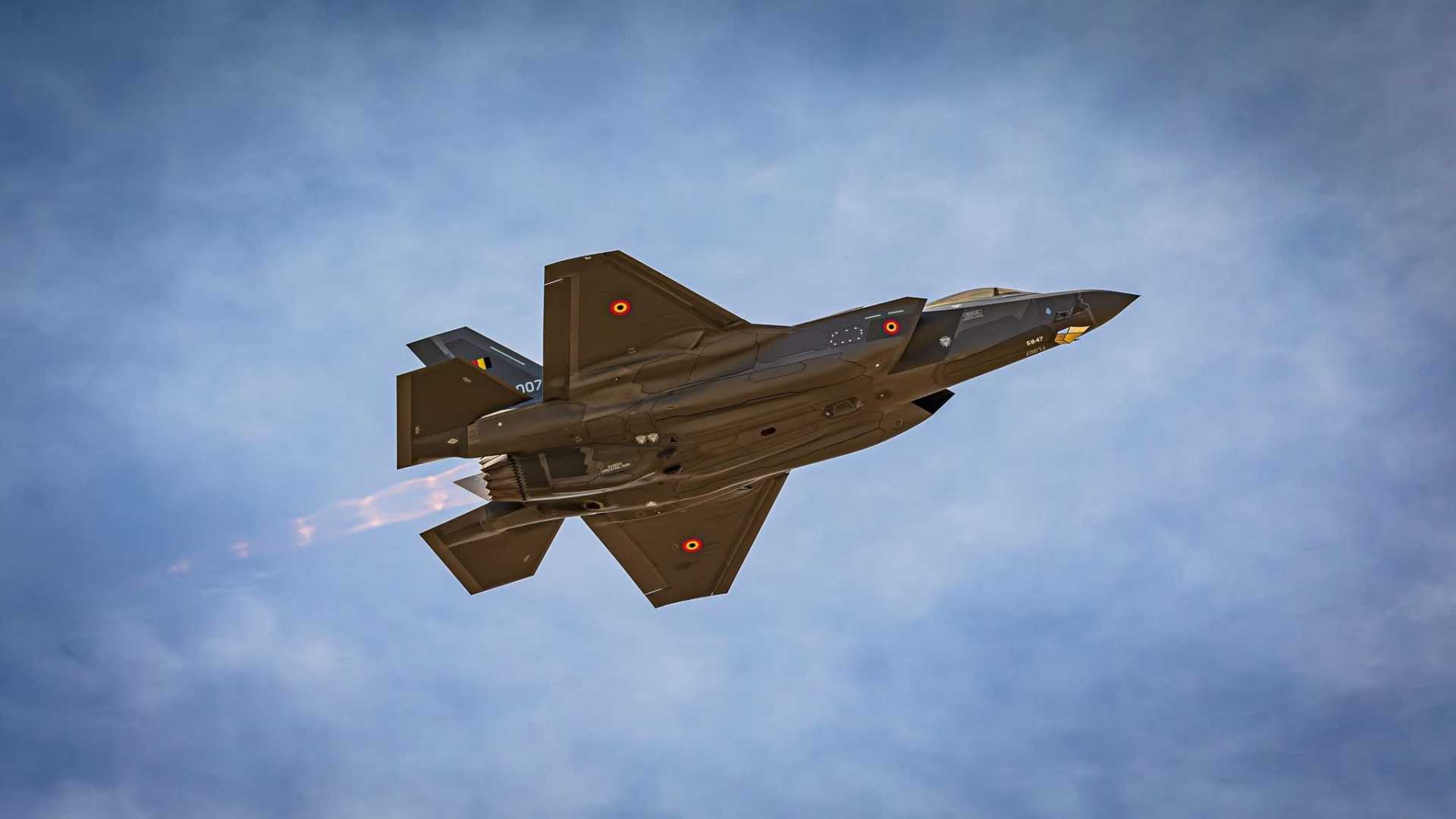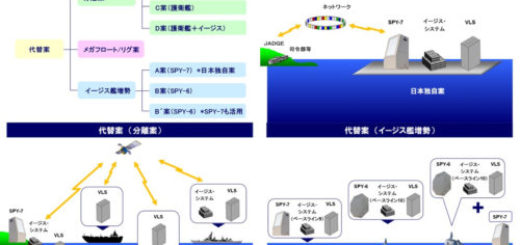First Belgian F-35 pilots complete US training to perform new missions beyond F-16 capabilities

{loadposition bannertop}
{loadposition sidebarpub}
On July 15, 2025, the NATO Allied Air Command officially confirmed that the first Belgian Air Force pilots had completed their training on the F-35A Lightning II in the United States. This training was conducted in cooperation with the United States Air Force at Luke Air Force Base, Arizona, and included instruction in fifth-generation tactics, mission planning, advanced sensor integration, and NATO-standard operational procedures.Follow Army Recognition on Google News at this link
The 1st Squadron, historically Belgium’s first fighter squadron, was reactivated in January 2025 to support the integration of the F-35, and this unit will form the foundation of Belgium’s operational F-35 capability. It will also coordinate the progressive induction of new pilots and aircraft into national service. (Picture source: NATO Allied Air Command)
This milestone coincides with preparations for the first delivery of F-35A aircraft to Belgium, scheduled for autumn 2025. Belgium’s first aircraft is undergoing the final finishing phase in the United States, including radar-absorbent coating application, mission system calibration, and stealth signature verification, prior to its maiden flight. These developments are part of Belgium’s broader transition from legacy F-16 aircraft to the F-35A as part of NATO capability alignment and national modernization plans. Lieutenant Colonel Pierre-Yves Libert has reportedly been confirmed as the first Belgian pilot to operate the F-35A.
He is currently serving as a pilot-instructor and national representative within the 312th Fighter Squadron at Luke AFB. Upon returning to Belgium, Libert will be assigned to the reactivated 1st Squadron of the 2nd Tactical Wing at Florennes Air Base. The 1st Squadron, historically Belgium’s first fighter squadron, was reactivated in January 2025 to support the integration of the F-35. Its responsibilities include managing simulator operations, overseeing academic and tactical training, and standardizing procedures for F-35 deployment within the Belgian Air Component. The unit will form the foundation of Belgium’s operational F-35 capability and will coordinate the progressive induction of new pilots and aircraft into national service. The reactivation of this squadron is intended to provide organizational continuity and focus during the transition from fourth- to fifth-generation combat aviation.
Florennes Air Base will serve as the principal operating location for Belgium’s F-35A fleet. Infrastructure upgrades totaling €275 million have been implemented to support the aircraft’s specific requirements. These include the construction of hardened aircraft shelters, maintenance zones, quick reaction alert (QRA) areas, mission planning centers, advanced simulator buildings, secure datalink systems, and improved living and operational facilities. Kleine Brogel Air Base has been designated as the secondary site, where aircraft will likely fulfill NATO dual-capable alert roles, including the delivery of B61 tactical nuclear weapons under U.S. protocols. Belgium’s QRA responsibilities over the Benelux region, which are currently carried out in coordination with the Netherlands, will be transferred to the F-35 once the type achieves full operational status. The Belgian Air Force plans to retire 30 F-16s starting in 2026, transferring them to Ukraine, while F-35A integration is underway.
Belgium’s procurement of the F-35 began with a competitive tender launched in 2017 to replace the fleet of F-16A/B MLU fighters. The F-35A Lightning II was selected in October 2018 over four competing aircraft. The selection was based on seven evaluation criteria: cost, operational performance, logistics, industrial participation, sustainment, strategic alignment, and interoperability with NATO systems. The contract signed in April 2020 under the U.S. Foreign Military Sales program included 34 F-35A aircraft and supporting infrastructure at an estimated cost of €4 billion, which was €600 million below initial budget projections. In July 2025, Economy Minister David Clarinval confirmed that Belgium would procure an additional 11 F-35A aircraft, raising the total to 45. This decision followed the resolution of a political impasse related to capital gains tax reforms and was framed as necessary to meet NATO’s aircraft availability targets. NATO had assessed that 34 aircraft were insufficient to meet Belgian requirements for national defense, air policing, pilot training, and nuclear deterrence duties. The final number of 45 was determined based on budget constraints, although earlier proposals considered the acquisition of up to 69 aircraft to fully meet NATO planning goals.
The 11 additional aircraft will be assembled at the Cameri Final Assembly and Check-Out (FACO) facility in Italy. This decision was formally confirmed in bilateral discussions between Belgian and Italian officials in April and May 2025, and later in negotiations with Lockheed Martin. The shift from U.S.-based to European-based assembly was motivated by the Belgian government’s interest in categorizing the aircraft as European-manufactured for eligibility in EU defense funding frameworks. While initial aircraft were produced at Fort Worth, future assembly at Cameri also supports industrial diversification and EU-based sustainment capability. Belgian industry participates in the F-35 program under the Essential Security Interest (ESI) framework, with companies such as SABCA, Asco, and ILIAS Solutions supplying components and software. Despite initial projections of €3.6 to €4 billion in offset returns, by 2022, Belgian industry had received only €700 million in contracts. A revised agreement signed in 2024 forecasts returns averaging €66 million per year over four decades, totaling €2.7 billion. These figures have been the subject of political debate within Belgium concerning transparency, economic benefit, and national sovereignty in defense procurement.
The F-35A is a fifth-generation conventional takeoff and landing (CTOL) multirole fighter designed for air superiority, strike, intelligence, surveillance, reconnaissance (ISR), close air support (CAS), and suppression of enemy air defenses (SEAD). It is powered by a Pratt & Whitney F135-PW-100 turbofan engine producing 43,000 pounds of thrust, enabling speeds up to Mach 1.6 and operational ceilings exceeding 15,000 meters. The F-35A integrates an AN/APG-81 AESA radar, Electro-Optical Targeting System (EOTS), and Distributed Aperture System (DAS) to deliver 360-degree infrared surveillance and precision targeting. Its combat radius exceeds 1,000 kilometers and can be extended via aerial refueling. The standard internal weapons bay can carry up to 2,600 kilograms of precision-guided munitions while preserving stealth; in “beast mode,” the aircraft can carry up to 10,000 kilograms externally, including AIM-120 AMRAAM, AIM-9X, GBU-31 JDAM, and AGM-88 HARM missiles. It is certified to carry the B61 tactical nuclear bomb, which is deployed in Belgium under NATO nuclear-sharing arrangements. The aircraft’s HMDS helmet replaces the traditional HUD and projects targeting and flight data directly onto the pilot’s visor, enabling 360-degree awareness and off-boresight engagement. The TR-3 software upgrade introduces improved computing performance, expanded sensor fusion, and the architectural foundation for Block 4 enhancements, including the AN/APG-85 radar, new missiles, AI support functions, and electronic warfare improvements. However, as of mid-2025, the TR-3 configuration remains limited to training, with combat certification pending.
Belgium’s F-35A fleet is expected to reach initial operational capability by 2027 and full operational capability by 2030. The Belgian government has allocated approximately €5 billion for the air component of its modernization plan, which includes aircraft, software upgrades, long-term maintenance, base infrastructure, and participation in a European data-management program to reduce dependency on U.S. systems. European industry contributes roughly 30 percent of total F-35 components, and countries such as the United Kingdom, Italy, the Netherlands, Finland, Germany, and Denmark are active participants in production. Belgium’s argument that the F-35 program is multinational rather than exclusively American relies on this European participation and supports domestic political efforts to frame the procurement as consistent with EU defense sovereignty objectives. Belgian authorities continue to assert that the program aligns with NATO force requirements, long-term cost control, and the technological standards necessary for participation in future coalition operations. With the 1st Squadron operational, the first jets near delivery, and training underway in the United States, Belgium is advancing its integration of the F-35A in accordance with its strategic planning timeline and alliance commitments.

{loadposition bannertop}
{loadposition sidebarpub}
On July 15, 2025, the NATO Allied Air Command officially confirmed that the first Belgian Air Force pilots had completed their training on the F-35A Lightning II in the United States. This training was conducted in cooperation with the United States Air Force at Luke Air Force Base, Arizona, and included instruction in fifth-generation tactics, mission planning, advanced sensor integration, and NATO-standard operational procedures.
Follow Army Recognition on Google News at this link
The 1st Squadron, historically Belgium’s first fighter squadron, was reactivated in January 2025 to support the integration of the F-35, and this unit will form the foundation of Belgium’s operational F-35 capability. It will also coordinate the progressive induction of new pilots and aircraft into national service. (Picture source: NATO Allied Air Command)
This milestone coincides with preparations for the first delivery of F-35A aircraft to Belgium, scheduled for autumn 2025. Belgium’s first aircraft is undergoing the final finishing phase in the United States, including radar-absorbent coating application, mission system calibration, and stealth signature verification, prior to its maiden flight. These developments are part of Belgium’s broader transition from legacy F-16 aircraft to the F-35A as part of NATO capability alignment and national modernization plans. Lieutenant Colonel Pierre-Yves Libert has reportedly been confirmed as the first Belgian pilot to operate the F-35A.
He is currently serving as a pilot-instructor and national representative within the 312th Fighter Squadron at Luke AFB. Upon returning to Belgium, Libert will be assigned to the reactivated 1st Squadron of the 2nd Tactical Wing at Florennes Air Base. The 1st Squadron, historically Belgium’s first fighter squadron, was reactivated in January 2025 to support the integration of the F-35. Its responsibilities include managing simulator operations, overseeing academic and tactical training, and standardizing procedures for F-35 deployment within the Belgian Air Component. The unit will form the foundation of Belgium’s operational F-35 capability and will coordinate the progressive induction of new pilots and aircraft into national service. The reactivation of this squadron is intended to provide organizational continuity and focus during the transition from fourth- to fifth-generation combat aviation.
Florennes Air Base will serve as the principal operating location for Belgium’s F-35A fleet. Infrastructure upgrades totaling €275 million have been implemented to support the aircraft’s specific requirements. These include the construction of hardened aircraft shelters, maintenance zones, quick reaction alert (QRA) areas, mission planning centers, advanced simulator buildings, secure datalink systems, and improved living and operational facilities. Kleine Brogel Air Base has been designated as the secondary site, where aircraft will likely fulfill NATO dual-capable alert roles, including the delivery of B61 tactical nuclear weapons under U.S. protocols. Belgium’s QRA responsibilities over the Benelux region, which are currently carried out in coordination with the Netherlands, will be transferred to the F-35 once the type achieves full operational status. The Belgian Air Force plans to retire 30 F-16s starting in 2026, transferring them to Ukraine, while F-35A integration is underway.
Belgium’s procurement of the F-35 began with a competitive tender launched in 2017 to replace the fleet of F-16A/B MLU fighters. The F-35A Lightning II was selected in October 2018 over four competing aircraft. The selection was based on seven evaluation criteria: cost, operational performance, logistics, industrial participation, sustainment, strategic alignment, and interoperability with NATO systems. The contract signed in April 2020 under the U.S. Foreign Military Sales program included 34 F-35A aircraft and supporting infrastructure at an estimated cost of €4 billion, which was €600 million below initial budget projections. In July 2025, Economy Minister David Clarinval confirmed that Belgium would procure an additional 11 F-35A aircraft, raising the total to 45. This decision followed the resolution of a political impasse related to capital gains tax reforms and was framed as necessary to meet NATO’s aircraft availability targets. NATO had assessed that 34 aircraft were insufficient to meet Belgian requirements for national defense, air policing, pilot training, and nuclear deterrence duties. The final number of 45 was determined based on budget constraints, although earlier proposals considered the acquisition of up to 69 aircraft to fully meet NATO planning goals.
The 11 additional aircraft will be assembled at the Cameri Final Assembly and Check-Out (FACO) facility in Italy. This decision was formally confirmed in bilateral discussions between Belgian and Italian officials in April and May 2025, and later in negotiations with Lockheed Martin. The shift from U.S.-based to European-based assembly was motivated by the Belgian government’s interest in categorizing the aircraft as European-manufactured for eligibility in EU defense funding frameworks. While initial aircraft were produced at Fort Worth, future assembly at Cameri also supports industrial diversification and EU-based sustainment capability. Belgian industry participates in the F-35 program under the Essential Security Interest (ESI) framework, with companies such as SABCA, Asco, and ILIAS Solutions supplying components and software. Despite initial projections of €3.6 to €4 billion in offset returns, by 2022, Belgian industry had received only €700 million in contracts. A revised agreement signed in 2024 forecasts returns averaging €66 million per year over four decades, totaling €2.7 billion. These figures have been the subject of political debate within Belgium concerning transparency, economic benefit, and national sovereignty in defense procurement.
The F-35A is a fifth-generation conventional takeoff and landing (CTOL) multirole fighter designed for air superiority, strike, intelligence, surveillance, reconnaissance (ISR), close air support (CAS), and suppression of enemy air defenses (SEAD). It is powered by a Pratt & Whitney F135-PW-100 turbofan engine producing 43,000 pounds of thrust, enabling speeds up to Mach 1.6 and operational ceilings exceeding 15,000 meters. The F-35A integrates an AN/APG-81 AESA radar, Electro-Optical Targeting System (EOTS), and Distributed Aperture System (DAS) to deliver 360-degree infrared surveillance and precision targeting. Its combat radius exceeds 1,000 kilometers and can be extended via aerial refueling. The standard internal weapons bay can carry up to 2,600 kilograms of precision-guided munitions while preserving stealth; in “beast mode,” the aircraft can carry up to 10,000 kilograms externally, including AIM-120 AMRAAM, AIM-9X, GBU-31 JDAM, and AGM-88 HARM missiles. It is certified to carry the B61 tactical nuclear bomb, which is deployed in Belgium under NATO nuclear-sharing arrangements. The aircraft’s HMDS helmet replaces the traditional HUD and projects targeting and flight data directly onto the pilot’s visor, enabling 360-degree awareness and off-boresight engagement. The TR-3 software upgrade introduces improved computing performance, expanded sensor fusion, and the architectural foundation for Block 4 enhancements, including the AN/APG-85 radar, new missiles, AI support functions, and electronic warfare improvements. However, as of mid-2025, the TR-3 configuration remains limited to training, with combat certification pending.
Belgium’s F-35A fleet is expected to reach initial operational capability by 2027 and full operational capability by 2030. The Belgian government has allocated approximately €5 billion for the air component of its modernization plan, which includes aircraft, software upgrades, long-term maintenance, base infrastructure, and participation in a European data-management program to reduce dependency on U.S. systems. European industry contributes roughly 30 percent of total F-35 components, and countries such as the United Kingdom, Italy, the Netherlands, Finland, Germany, and Denmark are active participants in production. Belgium’s argument that the F-35 program is multinational rather than exclusively American relies on this European participation and supports domestic political efforts to frame the procurement as consistent with EU defense sovereignty objectives. Belgian authorities continue to assert that the program aligns with NATO force requirements, long-term cost control, and the technological standards necessary for participation in future coalition operations. With the 1st Squadron operational, the first jets near delivery, and training underway in the United States, Belgium is advancing its integration of the F-35A in accordance with its strategic planning timeline and alliance commitments.






